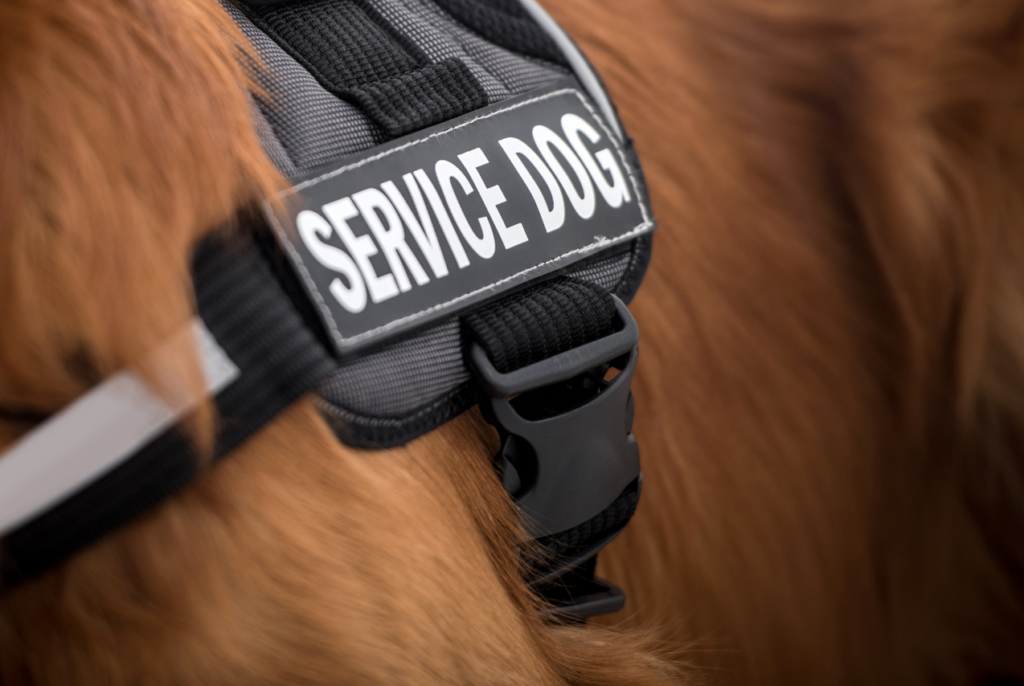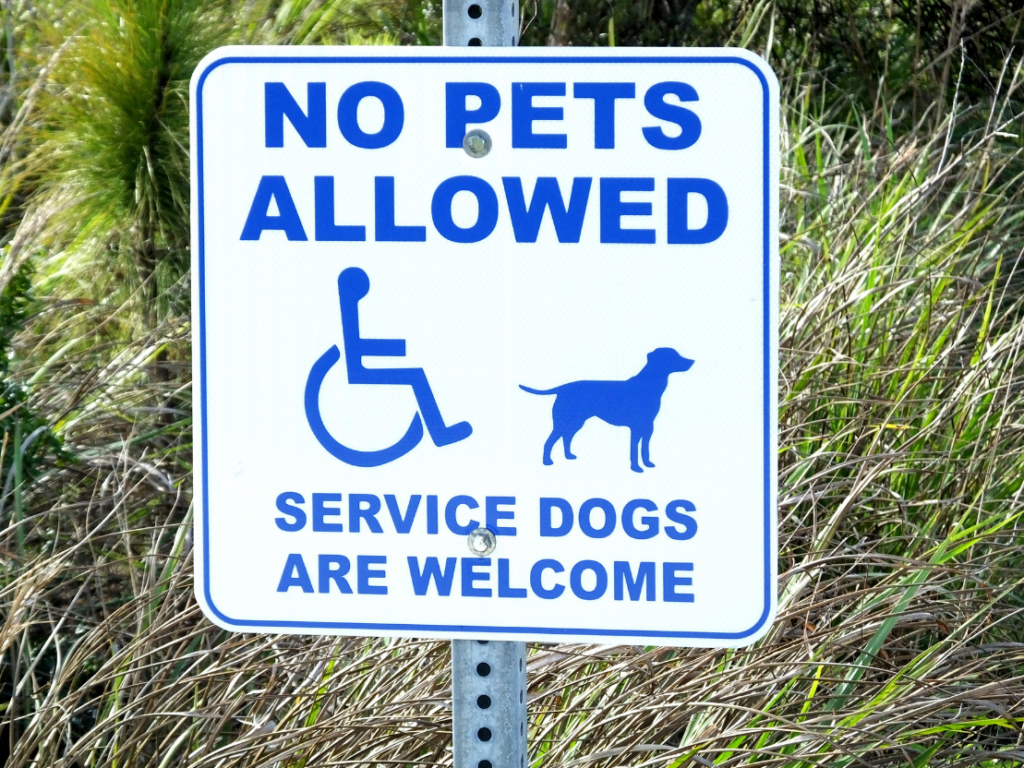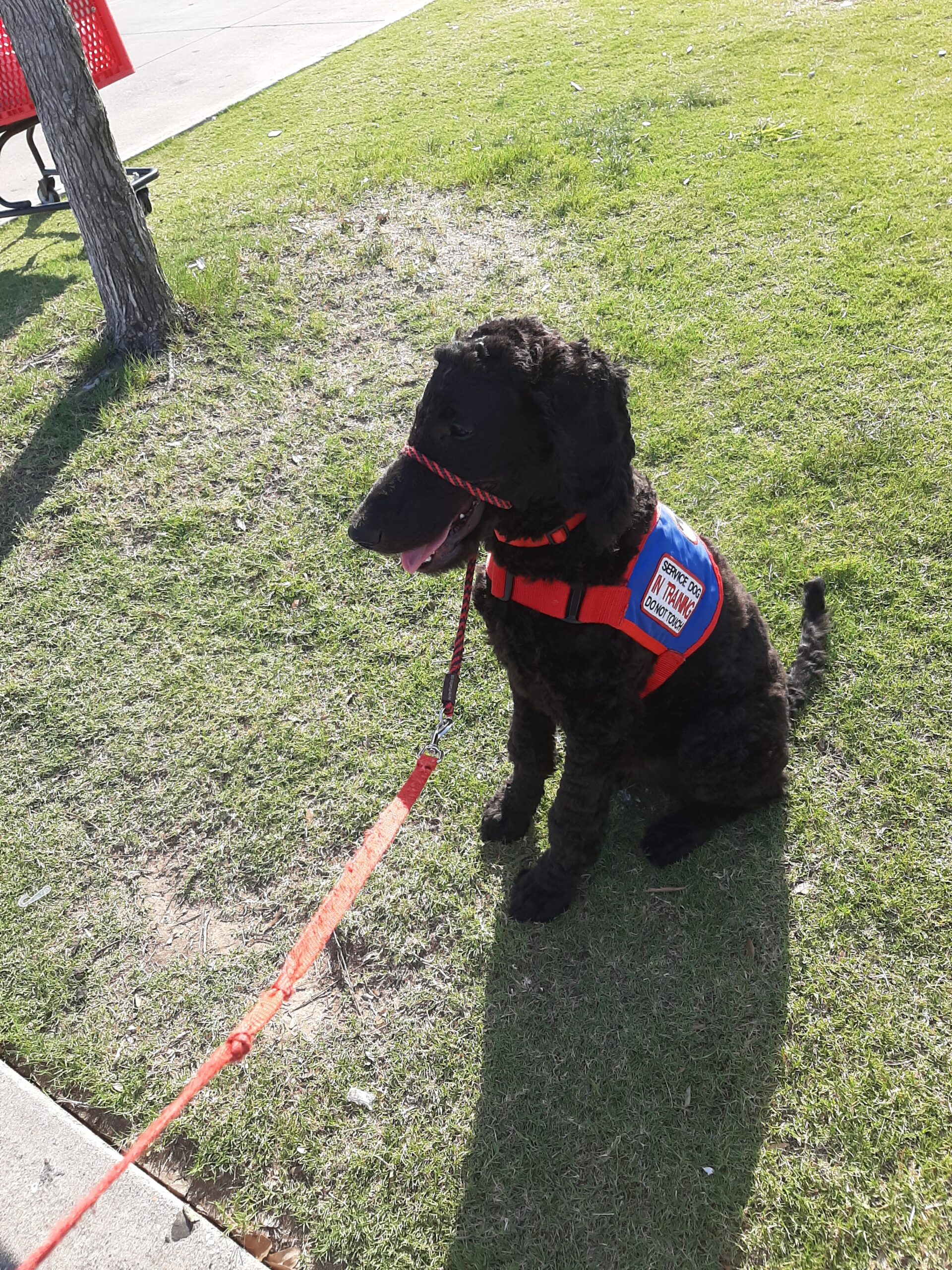A Service Dog Is A Service Dog Is A…Therapy Dog?
Hey, Friends!

I’ve been getting the question ‘what kind of Service Dog are you getting/what will your Service Dog do?’ quite a bit. This is a good question and I give you all ten thumbs up!










And two real ones as well!
I have found a way to answer this question in merely a few sentences. A lot of the time, though, that answer feels inadequate. So, I’ve decided I’ll spill out the long answer here, and direct people here, in the future.
So, grab a cup of water, clear your next few hours, and let’s dive in!
When someone says “service dogs”, most people’s minds go to seeing eye dogs, and no further. Unfortunate, as that is just the tip of the iceberg, and narrowing it down does everyone a disservice.
There are three Assistance Dog titles that are used semi-inter-changeably. These titles are as follows: service dogs, emotional support dogs, and therapy dogs.
As I’ve studied the details of this path I am journeying–a good thing to do on any new venture–I’ve learned just how different these assistance dogs are.
Clearly they’re different, right? I mean they have different names! Yes, and I believe people understand that general idea. What most don’t understand, is just how different these dogs are. This isn’t something commonly discussed, so that’s understandable. Because we’re here to discuss Service Dogs, we should clear up this misunderstanding. After all, it’s important to know what definitions you’re using in a debate, right? (The answer to that is yes. If you don’t, then it just ends up being a big mess.)
So, come on; let’s learn together! (Anyone else read that in a LeapPad voice? *shivers* I’m getting flashbacks. Okay, moving forward!)
Let’s start with Therapy Dogs.

- Therapy dogs are used in animal-assisted therapy.
- While therapy dogs aren’t allowed in most places that aren’t pet-friendly, places such as hospitals and libraries may allow entry due to a prior agreement.
- Asking if a therapy dog’s status is legitimate is allowed.
- If the handler agrees to it, so is petting the dog.
- While dogs are the most common animal in this category, there are no real limitations on the species.
- Therapy dogs have had to be screened for temperament, and go through basic obedience training.
- Therapy dogs also must be on a leash.
- Legally considered a pet, they don’t have any “legal perks”, for lack of a better term.
Let’s move on to emotional support dogs. These are medically prescribed animals that provide therapeutic aid to a single person through devoted companionship.

- Again, asking if an emotional support dog’s status is legitimate is allowed. However, only landlords, airline employees, and education-facility administrators are allowed to ask for medical documentation in order to allow access. These are the only places emotional support animals differ from pets on a legal-entry basis.
- As of December 2020, they are legally considered pets aboard airlines. This means they are no longer allowed to sit with their people in the cabin like service dogs are. They are not allowed in places like restaurants except by special permission. These animals are considered pets everywhere except no-pets-allowed residences.
- Their legal standing is little higher than therapy dogs, but they are not to go out in public with their handler. They are meant to help their people at home; not in public. If you need help in public, get a service dog.
- Ask their owner. This is a common courtesy that should be afforded to all animals. To the world, these animals are pets; to their person, they are therapeutic.
- Any type of animal qualifies as an emotional support animal AS LONG AS you have a signed letter from your doctor stating that this animal is necessary.
- Emotional support animals are not legally required to have gone through any type of training. If they’re out in public, then, they’re only allowed in pet-friendly places, and required to be on leash.

We have now arrived at Service Dogs. (This is the kind I am getting.)
The ADA defines a service dog as any dog that has been trained to perform tasks to aid with a disabil***. We’ll go more into this and give examples when we discuss how many different types of service dogs there are. (Hint: there’s a lot)
Quick side note here. ADA stands for Americans with Disabili**** Act.
Another quick side note. I blanked out that word because I won’t be using it here. It’s a mindset to which I don’t subscribe.
I recognize that certain people have personal monsters they get to deal with in life. That’s just a fact. Putting that label on it, though, makes it seem like they’re different than ‘normal’. Whatever ‘normal’ is. It makes it seem like these people are not as capable at this whole “life” thing as other people. This simply isn’t true; we just get to tackle it in a different way.
Sometimes it means we get to look for non-normal entry-level jobs. Sometimes the dynamic of our marriage will look different. We get to fight different demons than others. All this means, though, is they get to be creative in how we tackle life. That’s not a bad thing. In fact, I’m more grateful for my monsters than I would be if my life were perfect. It’s just a mindset, and you can choose what to make your mindset.
Okay, rant over. Back to service dogs.

When fully trained, service dogs are considered medical equipment. A handler cannot be refused entry into a place the general public is allowed. Universal access is granted under the FHA (Fair Housing Act), ADA, and IDEA/Section 504. The only places that can legally refuse the animal entrance are religious establishments, Native American reservations, kitchens, and operating rooms. The last two are allowed to refuse the dog solely for the reason that they have to be kept sterile. Yes, this means they can go into restaurants. This does NOT mean that eating off the table or begging is allowed. This is heavily discouraged in training. They do so with the fact in mind that these animals will go to places like restaurants and food courts.
Because they are animals, however, they are subject to normal licensing and vaccination laws. All assistance dogs/animals are. These laws are enforced more heavily due to the fact that they go everywhere with their handler.
While they have gone through extensive training, they’re still animals. It is necessary for these dogs to be on leashes UNLESS it hinders the dog’s tasks, such as a Heavy Mobility dog. If the dog causes a disruption, they can legally be removed from the premises. As in the English language, however, there are a few exceptions. (Okay, the English language has more than a few, but that’s beside the point.) Let’s say the dog is a grand mal seizure response dog. Many people don’t know how to react when these happen, as they can be downright terrifying. In cases like this, the dog is allowed to “tell” people to back away by growls or offensive stances. Actual violence doesn’t happen. Or, at least, shouldn’t. The dog is also allowed to bark so as to call attention to the person in need of aid.
If you see an service dog in public, you may not ask if they are a legitimate service dog. Aside from being illegal, it’s pretty rude. We don’t come up and ask about your medical history–please give us the same consideration.
There are two questions a handler may legally be asked about their dog by an employee of an establishment. 1.) Is this a Service Dog necessary because of a disability? and–if you’re still unconvinced– 2.) What services does it preform?
If you doubt the legitimacy of an assistance animal, please get an employee. We appreciate your concern about the integrity of the dogs allowed in, as, unfortunately, some people do lie about it. Asking to pet a service dog in public is a firm no. They are working, and distracting the dog could put the handler in jeopardy.

You may, however, treat the service dog like a normal dog when the vest is off; they are. Just like you, hopefully, the dog isn’t always working. When the vest comes off, they are in full pet mode.
As mentioned in passing above, therapy animals and emotional support animals can be any animal. The ADA law stipulates, however, dogs as the only animals legally allowed entrance as service dogs*. Neither the breed nor size matters. Many times it’s easier for diabetes response dogs to be smaller than bigger. Service dogs can be anything from chihuahuas to great danes.
*There are also service miniature horses, for those in need of more support.
Some people have seen these laws and figured out that they can say their dogs are something they aren’t. Most of the time, they claim them as emotional support dogs or service dogs. Oftentimes, though, you can tell which ones are real just by the way they act. Remember: service dogs go through exhaustive training. If a dog is running around, seeking attention from every person in the building, they probably aren’t true service dogs. Same for when they’re completely disregarding their human’s commands. Here, too, actions speak louder than words.
Okay. That’s a bit heady, yeah? So sit back, mull over what you’ve learned, and take a few deep breaths.
Next time we’ll cover the types of Service Dogs and what they do.
Thanks for your time!
Lauryn









Your home is valueble for me. Thanks!?